new posts in all blogs
Viewing: Blog Posts Tagged with: the Beatles, Most Recent at Top [Help]
Results 1 - 25 of 33
How to use this Page
You are viewing the most recent posts tagged with the words: the Beatles in the JacketFlap blog reader. What is a tag? Think of a tag as a keyword or category label. Tags can both help you find posts on JacketFlap.com as well as provide an easy way for you to "remember" and classify posts for later recall. Try adding a tag yourself by clicking "Add a tag" below a post's header. Scroll down through the list of Recent Posts in the left column and click on a post title that sounds interesting. You can view all posts from a specific blog by clicking the Blog name in the right column, or you can click a 'More Posts from this Blog' link in any individual post.
For months it has been raining in my kitchen. Whenever the clouds break, the water comes—through the roof, through the new ceiling, down the columns of new paint. The roofers say they're coming. I wait. I wait. And while I wait, storm by storm, I stand on a stool holding towels to the ceiling. 4 AM. 5 AM. Almost dawn.
Last night, while I was still in bed, I dreamed that the Beatles came to help hold back the storm. John and Ringo. (Paul was off getting married again and George was—absent.) Wearing white shirts, they sang their songs while they pressed old towels to the ceiling. When I woke at 3:30 they were no longer singing. It was up to me to stopper the storm.
Lucky for me, then, that I had ONE MORE DAY, the third novel by my friend Kelly Simmons, to keep me company. One toweled hand pressed to the ceiling, one hand cradling the book, my bare feet balanced on the old black stool, I read the last 100 pages of this novel from 4 AM to just right now, thinking, as I read, about all the conversations Kelly and I have had (during walks, over non-tea, in her house, in her yard, turning our turn-it-around bracelets on our arms) while this novel was in its stir. News of the first galvanizing surge of idea that sent Kelly to the page. News of the first electrifying email from Kelly's agent. News of the novel's sale to Sourcebooks. News of the story unfolding and again unfolding as Kelly worked through edits and revisions. News of
our shared excerpt moment in Main Line Today. Kelly was writing something new to her, taking risks, exploring the idea of the supernatural set against the backdrop of a mother's loss. She was onto something.
A few days ago, ONE MORE DAY arrived, courtesy of Lathea Williams, and I began reading at once. I am a fan of Kelly's work—her lovely sentences, her twists of humor, her insights into shame and longing. (Read my reviews of
STANDING STILL and
THE BIRD HOUSE.) ONE MORE DAY, with its limning of relationships and its multiplying secrets, is vintage Kelly with more than a soupcon of the otherworldly strange. A mother's kidnapped child returns for a single day. Ghosts appear—a grandmother, an old boyfriend, a childhood pet. The losses are real, the hurt is real, the secrets are real—but what is poor Carrie, the bereft mother, to think about these visitations? And what is her husband to think? Her mother? The police? The intruding newswoman? The neighbors? Libby, her friend from church? What are any of them supposed to believe, and what are we, the readers, to make of it all?
Whose side are we on?
Where do we come down on faith in things that rise up and then vanish?
I needed to know. I was so eager to find out that I didn't even notice that my suspended, book-cradling arm was shaking until I closed the book. Kelly, my copy is mottled with the unstoppered parts of today's storm. I hope you won't mind. I hope you won't mind, either, if I quote back to you my favorite passage in this book. You're so good at seeing this place we both call home. And you're so good at feeling that apartness that I, too, so often feel. And you're so good at writing sentences that sound just like this:
It was the type of neighborhood that was all proximity; you could turn left or right at any point off the boulevard and find a house that would inspire longing, part of your neighborhood technically, but not part of your world, with a quiet, lumbering grace that marked nobility, remove, other. Carrie was separate from all those people, she knew, and always had been. Not more deserving or less, just different from everyone else.
Congratulations, KellyKellyKelly.

By: Alice,
on 11/19/2015
Blog:
OUPblog
(
Login to Add to MyJacketFlap)
JacketFlap tags:
Books,
Music,
emi,
the beatles,
please please me,
*Featured,
george martin,
Sixties British Pop,
Gordon R. Thompson,
Andy White,
session musicians,
Add a tag
Every major news source last week carried news of Andy White’s death at 85. The Guardian’s “Early Beatles Drummer Andy White Dies at 85” represents a typical article title intended to attract readers albeit with misinformation that suggests that a particular two-minute-and-twenty-second episode from his life should be why we remember him.
The post Not a Beatle: Andy White appeared first on OUPblog.
Today I'm happy to share in the celebration for the publication of
Fab Four Friends: The Boys Who Became the Beatles, written by
Susanna Reich, illustrated by
Adam Gustavson, and published by Macmillan.
Author Susanna Reich has written an inspiring book chronicling the early years of John, Paul, George, and Ringo. Each is highlighted in turn with a focus on the events and people that shaped his future and his interest in music.
The final pages feature the band's early successes. Readers will be impressed by the boys' dedication to their musicianship and their ability to overcome family tragedy, illness, and in John Lennon's case - a lack of musical training and a guitar that his mother taught him to tune like a banjo.
John attacked the guitar, strumming as fast he could. He didn't give a fig about wrong notes.
Eventually Paul traded in his trumpet for a guitar. From then on, his brother said, "he didn't have time to eat or think about anything else."
At school, George sat in the back and drew pictures of guitars. But when it came to practicing, no one was more serious.
Back home, Richy [Ringo] couldn't stop his hands from tapping. Listening to all kinds of music—country and western, jazz, blues, skiffle—he'd rap on the back of a chair, bang on a box, or pound an old bass drum with a piece of firewood.
The text is small and in simple font on a plain background, leaving ample room for Adam Gustavson's stellar illustrations in "oil paint on prepared paper." It is a difficult task to render likenesses of these four men who are known and revered the world over. Gustavson has done a remarkable job in capturing their youth, signature expressions, and intensity of mood. In quiet acknowledgement of the post-war era that engendered the rise of rock and roll, the book opens with double-spread illustration of "a dark October night in 1940," the night when John Lennon was born in the midst of war with Germany. The final double-spread is the one that appears on the book's jacket.
More illustrations from Fab Four Friends are on the publisher's site.Rounding out
Fab Four Friends are an Author's Note, Glossary
(I'm sad that phonograph needs to be in the glossary!), Notes, and Sources.
I asked only one interview question of author Susanna Reich. With so many songs to choose from and her obvious love of her topic, I knew it would be a tricky question:
Q: "What's your favorite Beatles tune?" It sent her to her headphones for an hour of listening. Her final answer:
A: "Let it Be."It's certainly hard to argue with that.
The publisher's site lists a suggested age range of 6-10. I think older kids, particularly those with musical inclinations will be interested in this one as well.
Note:
A book's case and jacket are often (usually) the same. Library books are typically processed with protective coating on the jacket that secures it to the cover. So, if you're a librarian, or a library user, you may never see the books' case. If possible, however, take a peek under the jacket of
Fab Four Friends. The front cover features individual portrait style paintings of Paul, John, George, and Ringo. They appear youthful and suited and are presented in square frames reminiscent of yearbook photos or 1970s era Beatles posters. They are joyful and boyish - four fab friends.
My copy of
Fab Four Friends was provided by the publisher. You can find yours on a library or bookstore shelf, beginning today, August 18, 2015.
Follow the blog tour for
Fab Four Friends: The Boys Who Became the Beatles. Tomorrow, the tour will stop at
UnleashingReaders.com .
Happy book birthday to Fab Four Friends!


By: Alice,
on 8/4/2015
Blog:
OUPblog
(
Login to Add to MyJacketFlap)
JacketFlap tags:
Books,
Music,
Vietnam War,
America,
the beatles,
please please me,
Hollywood Bowl,
*Featured,
Gordon R. Thompson,
Sixties British Pop Inside Out,
Shea Stadium,
Watts riots,
Add a tag
Fifty years ago during their North American tour, The Beatles played to the largest audience in their career against the backdrop of a nation shattering along economic, ethnic, and political lines. Although on the surface the events of August 1965 would seem unconnected, they nevertheless illustrate how the world was changing and how music reflected that chaotic cultural evolution.
The post The Beatles, the Watts Riots, and America in transition, August 1965 appeared first on OUPblog.

By: Brittany Hobson,
on 6/11/2015
Blog:
OUPblog
(
Login to Add to MyJacketFlap)
JacketFlap tags:
Music,
Journals,
the beatles,
musical composition,
mashup,
Jay-Z,
Danger Mouse,
Editor's Picks,
*Featured,
musical performance,
Arts & Humanities,
Music Theory Spectrum,
Kyle Adams,
The Grey Album,
Add a tag
What does it mean to create an artwork? For centuries, we thought we knew the answer. In literature, an author recorded words on a page. In the visual arts, an artist put paint to canvas. In music, a composer jotted down tones and rhythms on a staff as the raw material for his/her creations.
The post Composition, performance, and mashups appeared first on OUPblog.
A poignant peek into the mind of a Beatle whose talents extended past creating immortal music.
 Classic is the New Black:
Classic is the New Black:You may see Beatles as a bug but I see them as a band. At the age of 3, my father exposed me to a whole new world of classics. This is how I came to love the Beatles. I don’t know why I like the Beatles, but there was just a spark. Maybe it was their catchy lyrics or great melodies. It was something about the realness of the group.
In the 1960s, four young men from Liverpool, England formed a band, The Beatles, a.k.a. the Fab Four. The Beatles were a revolutionary band that mixed different styles of music like country, rock and roll, and rhythm and blues. Little Richard, my distant relative, was one of their influences. Most of their early songs were “feel good” music. Although, “Help!” is my favorite song, I also like “Yellow Submarine,” ” All My Loving,” ”Can’t Buy Me Love,” and “A Hard Day’s Night,” which is the title of their first movie.
The Beatles were unique because they wrote their own songs. The Beatles made history because they were the first band to make a music video so they wouldn’t have to do as many live performances. Although the Beatles were British, they became internationally known. No wonder it was titled the British Invasion!
The original and ultimate “boy band,” the Beatles had a unique style of dressing, in similar clothing with long mop-top hairstyles. As a marketing strategy, they wore suits to win over parents’ approval. My father sure fell for that trick.
Out of all the members of the Beatles, my favorite is Paul McCartney because . . . actually, I don’t know why but I came to have a love for him. Paul is a very talented musician who wrote songs for the Beatles. Not only was he one of the main singers, but he played guitar, drums, piano, and the bass. Later, Paul collaborated with another of my favorite musicians, Michael Jackson. Now you can see why I love the Beatles so much!
Kennedy, Scholastic Kids Council Member

By: Alice,
on 8/7/2014
Blog:
OUPblog
(
Login to Add to MyJacketFlap)
JacketFlap tags:
the beatles,
please please me,
The Rolling Stones,
Shel Talmy,
Ray Davies,
the kinks,
Joe Meek,
Sixties British Pop,
Gordon R. Thompson,
Dave Clark Five,
Dave Berry,
Davies Brothers,
Denmark Street,
Geoff Stephens,
Honeycombs,
Ken Howard,
Marianne Faithful,
Mitch Murray,
The Crying Game,
Books,
Music,
*Featured,
Arts & Leisure,
Alan Blaikley,
Add a tag
By Gordon R. Thompson
In the opening months of 1964, The Beatles turned the American popular music world on its head, racking up hits and opening the door for other British musicians. Lennon and McCartney demonstrated that—in the footsteps of Americans like Buddy Holly and Chuck Berry—British performers could be successful songwriters too. In the summer, “A Hard Day’s Night” would prove that their success had not been a winter fluke or a momentary bit of post assassination frenzy.
It wasn’t that the Brits had been absent from the very profitable American market: Joe Meek had had success with the Tornados’ “Telstar” at the end of 1962. But before The Beatles, few in America cared much at all about what the British recording industry released. Indeed, British irrelevancy lay behind Capitol’s decision not to release recordings by The Beatles until news coverage got ahead of them.
In the wake of the Beatles, some of the evolving diversity of British songwriting emerged and the first stage came from composers associated with the heart of London’s music publishing world: Denmark Street. Publishers and musical instrument stores still call that short stretch of pavement home, but in the early to mid-sixties, everyone from the Beatles to the Kinks had been there. You could record at Regent Sound Studios (as did The Rolling Stones and The Who), you could grab a coffee with session musicians at Julie’s Café, or buy an ad at either Melody Maker or The New Musical Express. Indeed, The Beatles had gotten a huge break through publisher Dick James whose offices were at the corner of Denmark Street and Charing Cross Road.
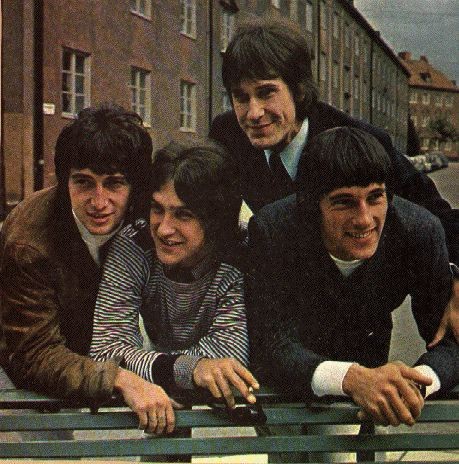
A promotional photo of British rock group The Kinks, taken in Stockholm, Sweden, ca. 2 September 1965. Public domain via Wikimedia Commons.
In 1963, Lennon and McCartney’s major competitor was Mitch Murray who had had a string of hits with Gerry and the Pacemakers (“How Do You Do It?”) and Freddie and the Dreamers (“I’m Telling You Now”). Murray’s forte was the simple, catchy lyric and tune, purchased and consumed in an instant, paid for by happy teens who eagerly waited for the next release. His songs had proved so successful in 1963 that John Lennon jokingly (perhaps) suggested that another challenge to the Lennon-McCartney catalogue could result in bruises for their competitor. Notably in this period, both the Liverpudlians and this Londoner published through Dick James Music.
However a particularly interesting composition emerged from the pen of another Denmark Street songwriter, this time associated with Southern Music. The twenty-nine-year-old Geoff Stephens was never much of a musician, but he had an ear for lyrics and tunes and “The Crying Game” had begun as a title and a premise. The title “seemed the perfect seed from which to grow a very good pop song,” he recalled. “We all know what it’s like to cry and have deep feelings.” Still, the song’s convoluted melody and irregular prosody made it an unlikely hit for 1964, but succeed it did.
Click here to view the embedded video.
A winning interpretation would come through Dave Berry whose breathy and exposed voice served as the perfect instrument for the melody, even if he initially thought the music inappropriate for him. (He saw himself as a rhythm-and-blues artist.) Decca producer Mike Smith (who had auditioned the Beatles back in 1962) brought in Reg Guest to serve as music director who, in turn, hired guitarist Big Jim Sullivan to complement Berry’s emotive interpretation. Employing a foot pedal meant for a steel guitar that controlled both tone and volume, Sullivan put the musical equivalent of crying into the recording. The result deeply impressed Beatle George Harrison who sought to find out how to recreate the sound (something he would accomplish the next year on songs like “I Need You” and “Yes It Is”).
Not all non-performer songwriters in this era had deep ties to Denmark Street. Ken Howard and Alan Blaikley had met at University College School as teens, sported proper academic degrees, had worked at the BBC, and were active participants in the intellectual world of late fifties and early sixties London. In 1964 they collaborated on the song “Have I the Right” and in a tavern found the Sheritons whom they believed were perfect to deliver their plea for love. The musical and lyrical materials are simple, but catchy, and demanded a distinctive sound and interpretation.
No one could better create a distinctive sound in London at the time than the enigmatic Joe Meek in his home studio on Holloway Road in North London. In order to create a sound around the band and the song, Meek turned to the four-on-the-floor musical grooves that had been popular that year (notably heard on recordings by another North London group, the Dave Clark Five). Meek recorded clipped microphones to the stairs outside his studio and had the band stomp in time with the music, perhaps in imitation of the Dave Clark Five’s “Bits and Pieces.” Next, he repeatedly overdubbed a guitar part and played with the tape speed to give it a wavering bell-like quality.
Howard and Blaikley would lease the recording to Louis Benjamin at Pye Records, who thought that the Sheritons needed a new name. Seeing the band’s female hairdresser-drummer Honey Lantree as its visual distinction and marketing hook, he renamed the band, The Honeycombs. The song topped British charts late in the summer and successfully climbed American charts that fall. The songwriters would become the band’s managers and continue to write music for them, although they never quite duplicated their success.
Click here to view the embedded video.
But where were British songwriters who also performed their own material? Jagger and Richards of The Rolling Stones had written “As Tears Go By,” but had decided to give it to Marianne Faithful. (They didn’t think it appropriate for themselves to release, at least as a single.) The band had also recorded a demo of another Jagger-Richards tune, “Tell Me,” at Regent Sound Studios in Denmark Street, only to discover that their manager Andrew Oldham had released it in America. Despite its modest success, Richards has since cited this recording as evidence of how little control they had over their career at this stage. They wouldn’t record their first real self-penned success early the next year with “The Last Time.”
More significantly during the summer of ‘64, one of the most important British artists of the era woke up every garage band on both continents, simultaneously frightening parents and the custodians of culture.
In July 1964 at IBC Studios in London, Shel Talmy prepared to give an unlikely group of musicians their last chance to have a hit. Talmy was a Los Angeles transplant, an outsider to the London recording scene who preferred to work as an independent artist-and-repertoire manager. Through hard work, good luck, and a bit of bluff, he had managed almost immediate success, much to the jealousy of the locals.
The group on whom he was gambling had the Davies Brothers as its leaders who had beaten the odds to get a recording contract, but who had struck out with their first two releases. The Kinks’ version of Little Richard’s “Long Tall Sally” had the misfortune of comparison with The Beatles, who were now using the tune to close their shows and who would soon release their own version of it. Their next attempt was a composition by Ray Davies. “You Still Want Me” carries all the hallmarks of early sixties British pop and, consequently, had very little that would distinguish The Kinks from everyone else.
“You Really Got Me” would be the song that lifted them to success. They arrived to record it at IBC Studios in July 1964 after already taping a slower and more bluesy version. Davies and Talmy (although they might disagree about the process later) agreed that a faster version could be more successful and booked time at the studio late at night. To insure success, Talmy had engaged session drummer Bobby Graham, who was already known around professional circles as at least one of the drummers on the Dave Clark Five records. He also brought in the veteran bandleader Art Greenslade to play piano.
Click here to view the embedded video.
Graham and Greenslade had been at a previous recording session earlier that night where a contractor had asked them to do a second session. After a pint or two and a bite to eat, they showed up at IBC for a date with the Kinks. Their first reaction, according to Greenslade, was a one of slightly restrained horror at the sight of the band; but, after a short rehearsal, they settled into a good working relationship. The band’s drummer, Mick Avory, settled into playing the tambourine.
Knowing full well, that you get six sides to get a hit, Ray Davies remembered years later the tension that night. “When that record starts it’s like… doing the four-minute mile; there’s a lot of emotion.” He remembers shouting at Dave, “willing him to do it, saying it was the last chance we had.” Brother Dave apparently responded with an expletive and launched into what must be one of the original punk guitar solos played through a ripped speaker. Talmy, for his part, tried to capture the sound and to shape it in a distinctive way, employing the young Glyn Johns and Bob Auger as his engineers.
The recording of “You Really Got Me” would establish The Kinks as one of Britain’s most important bands and Ray Davies as a songwriter to be watched.
Gordon R. Thompson is Professor of Music and Chair of the Department of Music at Skidmore College. His book, Please Please Me: Sixties British Pop, Inside Out, offers an insider’s view of the British pop-music recording industry. Gordon Thompson will be speaking at a number of Capital District venues in February. His lecture, “She Loves You: The Beatles and New York, February 1964,” will contextualize that band’s historic relationship with the Empire State. Check out Gordon Thompson’s posts on The Beatles and other music.
Subscribe to the OUPblog via email or RSS.
Subscribe to only music articles on the OUPblog via email or RSS.
The post The British are coming: the Summer of 1964 (part two) appeared first on OUPblog.


By: KatherineS,
on 3/27/2014
Blog:
OUPblog
(
Login to Add to MyJacketFlap)
JacketFlap tags:
Expressiveness,
*Featured,
one direction,
Health & Medicine,
Psychology & Neuroscience,
Carl Seashore,
Dorottya Fabian,
Emery Schubert,
Ludwig von Beethoven,
music psychology,
Ninth Symphony,
Renee Timmers,
Royal Albert Hall,
Vienna Musikverein,
Music,
Videos,
Multimedia,
performance,
beethoven,
the beatles,
Add a tag
By Dorottya Fabian, Renee Timmers, and Emery Schubert
Picture the scene. You’re sitting in a box at the Royal Albert Hall, or the Vienna Musikverein. You have purchased tickets to hear Beethoven’s Ninth Symphony performed by an internationally-renowned orchestra, and they are playing it in a way that sounds wonderful. But what makes this such a powerful performance?
What is expressiveness? Let’s start by looking at these images …




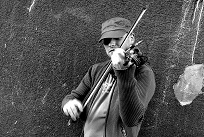

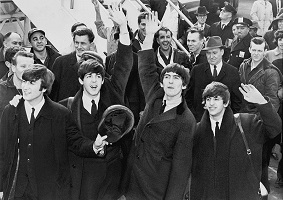
Do you notice what they all have in common? They are all displaying different kinds of expression. Just as facial expressions communicate different information to us, musicians playing the same piece will still produce slight differences. You can’t hear the musicians in these pictures, but they may both be playing the same piece in a way that is not exactly the same as the other group of musicians.
Click here to view the embedded video.
Click here to view the embedded video.
People say music is expressive. They usually say it is expressive of emotions and therein lays its power. But is this true of all music in all cultures and historical periods? Does it matter how it’s performed and how it’s experienced?
Philosophers, psychologists, and musicians have been pondering these questions for centuries. Over the last hundred years psychologists have contributed much to developing an empirically-based understanding of the mechanisms at play. The distinction between what may be “in the music” and what the performer “adds” became a fundamental assumption leading to various theories and definitions of “expressiveness in music performance.”
Ever since the pioneering work of Carl Seashore in the 1930s psychologists have been studying individual performers to find out “what it is that a performer brings to a piece of music.” So what is it that One Direction does when covering “All You Need Is Love” that makes their performance expressive? Are they more expressive than the Beatles are in this clip? Is it the song that is expressive or does it matter how it is performed?
For those educated in western classical music, Seashore’s working definition of what is expressiveness seems reasonable: You are listening to Beethoven’s Ninth Symphony and different orchestras and conductors make it sound more or less dramatic, uplifting, emotional, riveting. But if we pause for a moment and think of all those ever listening to this great icon of western musical culture, is it reasonable to believe that they know what is “the music”, i.e. Beethoven’s composition, and what the performers “bring to it”? What about an audience who have never experienced the piece before? How do they know what is “the music” and what is the contribution of the musician? This dilemma is even more obvious in other styles, like jazz, traditional, popular, or world music.
One, wordier definition of expressiveness in music performance is “the micro-deviations from the notated dictates of the score a performer executes while playing.” So, if the notes of a score are played literally, the piece will sound dull and inexpressive — like an old MIDI notation player, or a student playing precisely in time with a metronome. The result is a “neutral” performance, like the computer image of the face above. But is this an acceptable definition? What about musicians who do not use a music score – improvisers, people who play music by ear?
Recent empirical work has shown that listeners tend to be unable to say if the expressiveness they are hearing originates from the composition or the performance. Studying the experience of professional musicians highlights how differently they approach their performance. For them the score is never just notes on paper but already music imagined as sound. This imagination depends on their socio-cultural, historical position, personality, and education. They use metaphors and heuristics, short-cuts that package up accumulated knowledge and speeds up problem solving in preparation for and during performance. They rarely speak of specific emotions to be conveyed but conceive of music as “emotional,” “dramatic,” “uplifting,” or “turbulent,” for instance.
This is true of music and musicians of other artistic traditions, like classical Hindustani music. According to the dhrupad singer Uday Bhawalkar, “Music without emotion is not music at all, but we cannot name this emotion, these emotions, we cannot specify them.” The sentiments or emotions that we encounter in daily life become transformed into aesthetic experiences in theatre.
Empirical work in the area of jazz and popular music shows the importance of rhythm, vocal gestures, persona, and the role of technology to create meaning through sound effects. One fascinating finding regarding the culturally construed nature of what is “expressiveness in music performance” comes from a study of the Bedzan Pygmies. They live in very small communities with 40-60 kilometres distance between them and come together only for large festivities like weddings and funerals. When singing together in intricate polyphony, each singer varies his or her line at will while maintaining the overall identity of the song. For them “expressiveness” increased when they could detect more voices in the ensemble.
Expressiveness is an important part of music performance and perception, and although we have an intuitive understanding of what expressiveness in music means, as it turns out expressiveness in music performance seems too malleable and slippery to be defined in a singular way. So what is more important is to formulate the perspective of future research and discussion, to reorient our approach and reconstruct the object of investigation.
Dorottya Fabian, Renee Timmers, and Emery Schubert, are all researchers and lecturers in music psychology. Their book Expressiveness in Music Performance offers a variety of approaches to talk meaningfully about expressiveness and music within a cross-cultural context, providing disciplinary overviews, discussion papers and case studies to show that debates of importance across the humanities and social sciences can be conducted in a richly evidence-based manner.
Subscribe to the OUPblog via email or RSS.
Subscribe to only brain sciences articles on the OUPblog via email or RSS.
Image credits: (1) Guilty Face, by Barry Langdon-Lassagne, CC-BY-3.0 via Wikimedia Commons. (2) Your Smiling Face, by Sibelle77, CC-BY-SA-3.0 via Wikimedia Commons. (3) Изображение-Портреты-Михайлова Елена Владимировна, by участница Udacha, CC-BY-3.0 via Wikimedia Commons. (4) Addys Mercedes Kult 02, by Schorle, CC-BY-SA-3.0 via Wikimedia Commons. (5) Adam Romański 1, by Konrad Wawrzkiewicz (Shannon5), CC-BY-SA-2.5 via Wikimedia Commons. (6) One Direction Glasgow, by Fiona McKinlay, CC-BY-SA-2.0 via Wikimedia Commons. (7) The Beatles in America, by United Press International, photographer unknown, Public domain via Wikimedia Commons.
The post Expressing ourselves about expressiveness in music appeared first on OUPblog.


Artist Tom Whalen has designed a set of four Beatles posters, using their likness and characters from the animated feature Yellow Submarine (1968). We’ve showcased Whalen’s Looney Tunes, Peanuts and Gigantor limited edition tributes before – I’m a big fan.
Dark Hall Mansion is releasing this officially licensed Beatles project, a 4-print interlocking Limited Edition set – John, Paul, George and Ringo – in both “standard” (above) and “psychedelia” (below, click thumbnails to enlarge). There will only be 200 of each edition produced, both editions go one sale precisely at 9:30 AM PST at Dark Hall Mansion’s online Store on February 12th, 2013.
More information can be found on these and other editions available at Dark Hall Mansion.




Complete Press Release below:
Dark Hall Mansion working closely with Live Nation Merchandise, The Beatles’ North American Licensing Agent, and Apple Corps Ltd will release their new Beatles limited edition screen print set of 4 by leading contemporary artist, Tom Whalen, on February 12, 2013. This exclusive 4-print set stunningly showcases The Beatles unmistakable personas amongst the abstracted milieu of ’60s Pop culture and the landmark film that is “Yellow Submarine.” The 4 prints measure 24″ x 30,” each, and were beautifully composed and designed to work individually or as an interlocked whole when displayed.
Tom Whalen’s 4 new Beatles prints make a striking impression, particularly when viewed as a single quadtych, one meant to artistically render and underscore the personalities of The Beatles themselves. Each print will be individually numbered, 24″ x 30″ in size, and exquisitely screen printed. With an extremely limited release of only 200 sets available worldwide for all Beatles fans, it’s an edition for even the most discerning Beatles collector.
There will also be a very select Psychedelia Edition, limited to just 50 sets worldwide with each print individually signed by artist Tom Whalen and printed with shimmering metallic inks that intensely set off the designs and nuances of his highly stylized artwork.
Both Editions go one sale precisely at 9:30 AM PST at Dark Hall Mansion’s online store on February 12, 2013.Pricing will be $200 for the entire 4-print Standard Edition and $300 for the entire 4-print Psychedelia Artist Signed Edition.
The 4-print Beatles sets are a limited edition series created by Dark Hall Mansion. ‘The Beatles’ is a registered trademark of Apple Corps Limited. Yellow Submarine is a trademark of Subafilms Ltd © 1968. Dark Hall Mansion is a labor of love. We are passionate about art, about the work of print and poster artists present and past,here and abroad, we are committed to bringing their skills to the forefront on projects both compelling and exciting, bridging their studios and creations directly with your walls and personal collections.

By: Alice,
on 12/26/2012
Blog:
OUPblog
(
Login to Add to MyJacketFlap)
JacketFlap tags:
disc,
discs,
the beatles,
hamburg,
brian epstein,
retailer,
Editor's Picks,
*Featured,
Love Me Do,
Arts & Leisure,
New Musical Express,
Alan Smith,
Billy Fury,
Decca,
Don Arden,
Gordon R. Thompson,
Melody Maker,
North End Music Stores,
record charts,
Record Retailer,
Music,
london,
charts,
Add a tag
By Gordon R. Thompson
The Beatles were unlikely successes on London’s record charts in December 1962. Northerners with schoolboy haircuts who wrote and performed their own songs, their first record “Love Me Do” had risen slowly up British charts, despite lack of significant promotion by their publisher and record company, and without an appearance on national television. Moreover, while they should have been touring Britain to promote the disc, they instead played a pre-booked residence at the Star Club in Hamburg. The disc should have flopped.
Some have speculated that the Beatles’ manager Brian Epstein arranged for the family business, North End Music Stores to purchase enough copies of the record to move it in the charts. “Fiddling” with the charts was hardly unknown both in Britain and in the US. The notorious British manager Don Arden (Sharon Osborne’s father) later bragged that he could move the rank of a disc with a discrete monetary investments.
The most widely read music papers of the day — the weeklies The New Musical Express and Melody Maker — contained interviews with artists, managers, producers, and songwriters, listed tour dates and contract changes, featured recently released discs in reviews, and ranked the week’s top recordings. By today’s standards, their methods were primitive, blending a few calls to big merchants with personal intuition. An informed manager or producer could move a release in the charts simply by purchasing the right number of discs in the right shops or by persuading the right people that particular artists were the next big thing.
Click here to view the embedded video.
The curious chart history of “Love Me Do” sees the song appear first on Record Retailer’s charts shortly after its release and then two weeks later on Melody Maker’s charts. In Record Retailer, the disk would reach #17 in the 27 December 1962 issue, while in Melody Maker, it reached #21 the first week of January. The recording entered the charts of Disc weeks after the other papers and climbed no higher than #24 in December.
If these charts represent record sales, one wonders why they should differ. Record Retailer prided itself on having its finger on the pulse of record merchandising by polling its readership: Britain’s retail disc merchants. Earlier in 1962, when a flu swept through Decca’s manufacturing plant disrupting their ability to press records, both Melody Maker and the Daily Mail published charts showing Elvis Presley’s newest recording (“Rock-a-Hula Baby”) suddenly holding the #20 position, despite the absence of disks to sell. Melody Maker insisted that it had placed the disk in the charts because of comments from retailers combined with a previous announcement of its release. Melody Maker’s stated sources — and their data on record sales — suggest that the venerable music paper relied on selected stores and intuition. Another variable in these numbers recognizes that some figures may reflect the number of discs purchased by shop owners as distinct from the number of disks purchased by customers.
Two weeks after “Love Me Do” entered Record Retailer’s charts, NME apparently gave the recording a quick guess placement, before dispatching it to presumed history. An October 26 article by one of NME’s writers, Alan Smith, extols the group and the budding talent of its songwriters. “Newcomers to the Charts: Liverpool’s Beatles Wrote Their Own Hit” makes the connection between the Beatles and Billy Fury and promoted the potential of the recording. The NME’s editors apparently seized upon the convergence of sales reports in other papers and the press releases to write something they thought would sell a few papers.
Over at Record Retailer, however, the disk climbed slowly with little apparent promotion, peaking at the end of the year, setting the stage for the release of their second single, “Please Please Me,” which the Beatles had already recorded in November. Breaking into the charts represented a remarkable feat for a new group, let alone one from the provincial and industrial north. Perhaps Liverpudlian Billy Fury had paved the way for them with three significant hits in 1962: “Letter Full of Tears” (charts 15 March, UK #32), “Last Night Was Made for Love” (charts 3 May; UK #4), and “Once upon a Dream” (charts 19 July, UK #7).
Click here to view the embedded video.
That cold and dark December would see Ray Davies meet British bluesman Alexis Korner and work his way into Dave Hunt’s Rhythm and Blues Band and play at the Piccadilly Jazz Club. There, another new group, the Rolling Stones (who had just landed a bass player in the form of Bill Wyman) would impress him. Something musical was beginning to happen in London. Something raw and exciting.
Gordon Thompson is Professor of Music at Skidmore College. His book, Please Please Me: Sixties British Pop, Inside Out, offers an insider’s view of the British pop-music recording industry. Check out Gordon Thompson’s posts on The Beatles and other music here.
Subscribe to the OUPblog via email or RSS.
Subscribe to only music articles on the OUPblog via email or RSS.
The post Charting success: The Beatles, December 1962 appeared first on OUPblog.


By: Alice,
on 12/25/2012
Blog:
OUPblog
(
Login to Add to MyJacketFlap)
JacketFlap tags:
george harrison,
emi,
the beatles,
gordon thompson,
please please me,
lennon,
mccartney,
brian epstein,
*Featured,
Love Me Do,
Arts & Leisure,
luxembourg,
barrow,
george martin,
New Musical Express,
Parlophone,
Radio Luxembourg,
Record Mirror,
Sixties British Pop,
Tony Barrow,
barrow,
Music,
BBC,
1960s,
Add a tag
By Gordon R. Thompson
As a regional businessman and a fledgling band manager, Brian Epstein presumed that the Beatles’ record company (EMI’s Parlophone) and Lennon and McCartney’s publisher (Ardmore and Beechwood) would support the record. This presumption would prove false, however, and Epstein would need to draw on all of the resources he could spare if he were to make the disc a success. He began with what he knew from the retail end of the industry and commenced rallying Liverpudlians to write letters to both Radio Luxembourg and the BBC asking them to play “Love Me Do.”
Just as the stations XERF (in Ciudad Acuña, Mexico) and CKLW (in Windsor, Ontario, Canada) were able to broadcast deep into the United States with transmitters many times more powerful than FCC-regulated American stations, a station in the Grand Duchy of Luxembourg carpeted most of Western Europe. Perhaps surprisingly, Radio Luxembourg (broadcast in the Medium Wave band) was British-owned and its English-language service became a primary outlet for UK businesses whose advertising the BBC declined. (The BBC refused to broadcast anything that suggested product promotion.) Radio Luxembourg suffered its sometimes-scratchy signal; but British listeners tuned in every night to embrace the pop music that Aunty Beeb would not play.
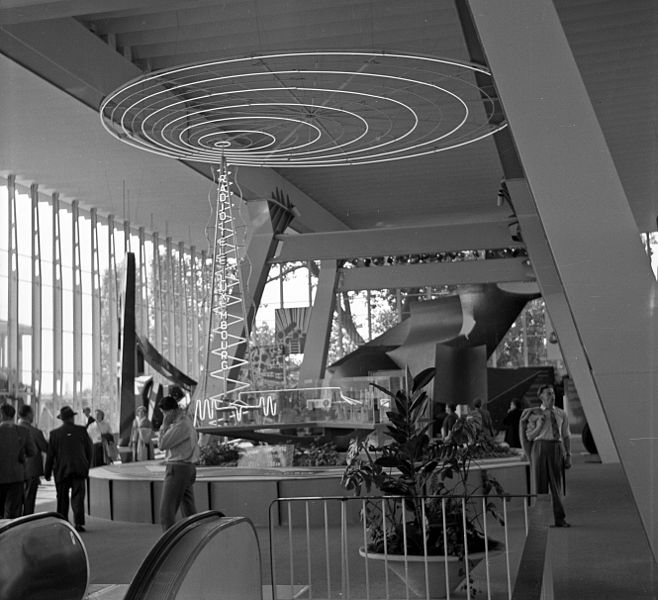
Expo 1958 Radio Luxembourg by Wouter Hagens. Creative Commons License.
British corporations like EMI and London music publishers like Essex Music directly controlled much of the station’s airtime by buying broadcast blocks during which they played pre-recorded programs. Indeed, on Monday 8 October 1962, the Beatles taped an interview at EMI’s headquarters in London, which Radio Luxembourg broadcast along with their recording of “Love Me Do” on Friday 12 October. (George Harrison later recalled the thrill of first hearing himself on that radio broadcast.) The Liverpool letters solicited by Epstein that arrived in Luxembourg eventually arrived at EMI in London where the manager hoped they would catch corporate attention and result in better domestic support for the Beatles and their releases.
Tony Barrow, whom Epstein had originally contacted at Decca Records in his quest to get the Beatles a recording contract, began work for NEMS (North End Music Stores) as the Beatles’ publicist. (He could hardly have imagined how his job description would evolve from soliciting the press’s attention to holding them at arm’s length.) As a reviewer and a liner-note writer, Barrow had often worked from press materials prepared by agents and managers. These releases could vary significantly in kind and quality, but among them, Barrow thought that the press kits from Leslie Perrin’s office (which had represented London’s infamous Raymond’s Revue Bar, among others) were particularly effective. Notably, a color-coded press kit walked readers through a client’s story, which made a reviewer’s tasks easier. Barrow appropriated this format in his preparations for promoting the Beatles.
The role of the press agent involved finding the right people to contact and, for that, Barrow needed names, addresses, and phone numbers. Coincidentally, he knew someone who had recently left Decca’s press office. The Beatles’ new agent presumed that the individual would have taken a copy of the company’s mailing list and, after a casual meal, they reached a mutually beneficial agreement. Brian Epstein’s new part-time press manager walked away with a cache of contacts.
Barrow began by introducing the Beatles to London’s music press, escorting the Liverpudlians from the Denmark Street offices of New Musical Express to Fleet Street’s Melody Maker. They were willing to go almost anywhere to meet anyone with access to print or broadcast media. For example, on 9 October 1962 (the day after taping the Radio Luxembourg program), they visited the offices of Record Mirror so that writers there could see how different they were from other entertainers and to hopefully experience some of the charm that had swayed George Martin.
The mixed results both encouraged the band and its manager, and disappointed them. Alan Smith, writing in the New Musical Express (26 October 1962), briefly introduced the band, highlighting how Lennon and McCartney had written their “hit.” However, if you were the Beatles searching the papers for even the briefest mention (which they did weekly), you found little.
Brian Epstein in a 1967 interview would justifiably take credit for some of the band’s early success, citing his diligence and perseverance. The slow climb of “Love Me Do” up the charts would be his vindication. By December 1962, despite setbacks, the single increased sales and nudged into the top twenty on the most respected (if selectively read) chart. They were poised for something and they were sure ‘twas for success.
Gordon Thompson is Professor of Music at Skidmore College. His book, Please Please Me: Sixties British Pop, Inside Out, offers an insider’s view of the British pop-music recording industry. Check out Gordon Thompson’s posts on The Beatles and other music here.
Subscribe to the OUPblog via email or RSS.
Subscribe to only music articles on the OUPblog via email or RSS.
The post Selling the Beatles, 1962 appeared first on OUPblog.


By: Alice,
on 2/13/2012
Blog:
OUPblog
(
Login to Add to MyJacketFlap)
JacketFlap tags:
Music,
1960s,
the sixties,
emi,
the beatles,
epstein,
pop music,
rowe,
brian epstein,
*Featured,
Arts & Leisure,
Add a tag
By Gordon Thompson
On a cold winter’s day in early 1962, Brian Epstein and the Beatles huddled together contemplating their failed bid for a Decca recording contract and the bitter aftertaste of rejection that left emptiness in their stomachs. But hunger can feed ambition. Disappointments would ensue, but almost immediately Epstein would be the proverbial right man in the right place at the right time and meet a string of people who were looking for something not-quite-exactly unlike the Beatles.
The first full week of February 1962 would prove to be one of the most remarkable in the Beatles story. On Monday, 5 February, the Beatles’ drummer Pete Best — whom they had still not informed of Decca’s decision — called in sick and his band mates recruited an old friend from a rival band. Ringo Starr appeared that night with Lennon, McCartney, and Harrison in Southport, a city just north of Liverpool where perhaps his dry humor helped ease the pain, just as his personality would help anchor the band two years later as America exploded around them.
Although Decca artist-and-repertoire managers Dick Rowe and Mike Smith had turned them down, Epstein returned to London to argue for reconsideration. Over lunch in London on Tuesday, 6 February, Epstein sat politely arguing with Rowe and Sidney Arthur Beecher-Stevens, Decca’s sales manager, in an attempt to change their corporate mind. Rowe notoriously and with great self-confidence recommended that the manager return to record retailing in Liverpool. They were the experts. They knew these things.
Epstein did win a small “concession” from them: Rowe offered to arrange for ex-Shadow drummer Tony Meehan to produce the Beatles at Decca if the manager agreed to cover the expenses of about £100. Epstein kept his options open and made an appointment for Wednesday, 7 February to meet with Meehan whose squeaky-clean reputation and pop credentials the manager would have found appealing. Still, little about the meeting satisfied the manager. Meehan arrived late (Epstein’s bête noire) and his condescending comments about the Beatles’ audition only added salt to the wound. An interesting moment of musical potential slipped into history; but, the planets were still moving and, on Thursday, the orbs began coming into alignment.
With the addresses of other record companies in London and a copy of the Decca audition tape, Epstein employed this magnetic artifact in his quest to win a contract for his “boys.” Nevertheless, a quickly arranged meeting at Pye Records, the third largest label in Britain, also ended in disappointment. Executives at EMI, the largest music corporation in Britain, had already declined Epstein’s request for an audition even before Decca had accepted. His options narrowed.

Exterior of HMV, 363 Oxford Street, London in the 1960s. Copyright HMV.
Epstein realized that the medium might present the problem: an audition tape clearly made at Decca indicated that the label had rejected the material. What record executive would want to sign performers that another label had already rejected? Epstein knew that EMI’s HMV store near the Bond Street underground station had a service that would transfer taped material to disk. Certainly, a disk would say “important.” Conveniently, Epstein also knew the store manager.
What transpires on Thursday, 8 February arguably shifts the course of musical history. Combining a social visit with the need to t

By: Lauren,
on 2/9/2011
Blog:
OUPblog
(
Login to Add to MyJacketFlap)
JacketFlap tags:
Music,
History,
UK,
paul mccartney,
John Lennon,
cavern,
this day in history,
the beatles,
gordon thompson,
please please me,
liverpool,
cavern club,
*Featured,
pete best,
stu sutcliffe,
Add a tag
By Gordon Thompson
Fifty years ago, one of the great stories in pop music began when the Beatles debuted in a dank arched subterranean Liverpool club dedicated to music. Located in the narrow lane called Mathew Street, just of North John Street, the Cavern Club had opened as a jazz haven that enfolded blues and skiffle, which was how the Quarry Men, John Lennon’s precursor to the Beatles, had first descended the steps and climbed the tiny stage in August 1957. Three-and-a-half years later, the Beatles had evolved into a much different beast than the Quarry Men and the Cavern Club had modified its business strategy to embrace a growing youth audience. The band’s recent stint in Hamburg had initiated a transformation that was about to blossom inside the brick arched chambers built to warehouse vegetables. For the Beatles, Stu Sutcliffe’s return from Hamburg in late January added his dissonant rumble to their sound; but they had entered a transitional phase with Paul McCartney gradually assuming the role of bassist. As Sutcliffe returned to a career in art, the Beatles would tighten their sound and performances.
Other Liverpool bands played the Cavern too, including the Remo Four who had recently trumped the Shadows—the most famous band in the UK at the time. The Beatles would find the club a competitive environment in which to sharpen their skills in the pursuit of fans. Their first gig at the Cavern on 9 February 1961 would lack auspiciousness and earn them a mere £5 (split five ways) for their 12:00-2:00 PM performance. This engagement initiated the club’s attempt to draw a midday audience and, with little advertising, the crowd would have been small. Moreover, when owner Ray McFall saw the musicians, he took offense at their leather jackets and jeans, informing them that they had to dress better if they wanted to play the club again. And to the band’s further discomfort, Sutcliffe’s playing would have, if anything, deteriorated even further during the month he had stayed in Hamburg. But they were beginning to develop a reputation, commencing with a remarkable December performance at the Litherland Town Hall. The Beatles tapped into a curious mix of hard rock, rockabilly, and pop, with each of the band members taking a turn at the microphone and applying a combination of enthusiasm and irreverence.
The Hamburg experience had taught them how to survive the long hours by sharing responsibilities, working as a team, and exploiting their existing repertoire of all its possibilities. Their model may in part have derived from Britain’s postwar experience, when families shared and extended their meager resources. The division of responsibilities in the band helped make it successful. Lennon, the social director, knew how to deliver the emotionally charged performances. McCartney, the self-appointed music director, had a screaming Little Richard imitation that he could counter with coy ballads. And Harrison—the boy of the band—focused on his succinct guitar solos and a growing vocabulary of altered chords. That left the stoic and impassive drummer Pete Best and bassist Sutcliffe sitting at the back, occasionally crooning a song for the benefit of their fans.
In the Cavern, the Beatles would build an audience by playing rock ‘n’ roll while smoking, eating, and joking on stage, including McCartney doing imitations of the Shadows’ by now infamous Cavern catastrophe. (Their bass player had shown up drunk and fallen off the stage.) Lennon recalled that half their stage show was ad lib comedy, which portended the public image

By: Maryann Yin,
on 1/26/2011
Blog:
Galley Cat (Mediabistro)
(
Login to Add to MyJacketFlap)
JacketFlap tags:
Celebrities,
Deals,
letters,
John Lennon,
The Beatles,
Yoko Ono,
Alan Samson,
Love Me Do,
Orion Publishing Group,
Add a tag
Yoko Ono, the widow of Beatles legend John Lennon, has given permission for 150 of Lennon’s personal letters to be published in a single volume.
According to The Guardian, Alan Samson from the Orion Publishing Group acquired world rights to the collection. Publication is set for October 2012–the 50th anniversary of the Beatles’ hit release, Love Me Do. The video embedded above shows the band playing that song.
Here’s more from the article: “Orion saw off competition from all the big-hitting publishing houses who went to Davies’s home in Kentish Town, north London, to make their bids…Samson would not disclose how much Orion had paid for the right to publish the book, although it is thought to be in excess of £500,000 but less than £1m quoted in other media.”
continued…
New Career Opportunities Daily: The best jobs in media.

By: Maryann Yin,
on 11/1/2010
Blog:
Galley Cat (Mediabistro)
(
Login to Add to MyJacketFlap)
JacketFlap tags:
Mick Jagger,
New York Public Library,
The Beatles,
The Rolling Stones,
Jerry Hall,
Muddy Waters,
Keith Richards,
Libraries,
Life,
Celebrities,
Events,
Add a tag
 Last Friday, Rolling Stones guitarist Keith Richards made an appearance at the New York Public Library to talk about his new memoir, Life.
Last Friday, Rolling Stones guitarist Keith Richards made an appearance at the New York Public Library to talk about his new memoir, Life.
People had stood in line since 8 a.m. for the event. Each ticket purchase included a signed copy of the book.
Richards revealed a lifelong love for libraries. He jokingly pointed out that it was one of the few places where even he obeyed the rules (i.e. silence).
He explained: “To me, it was a place you got a hint that may be there was a thing called civilization … It was a place I went to find out things I wanted to find out about.”
continued…
New Career Opportunities Daily: The best jobs in media.
.jpg?picon=572)
By:
andrea joseph,
on 7/19/2010
Blog:
andrea joseph's sketchblog
(
Login to Add to MyJacketFlap)
JacketFlap tags:
journal,
doodles,
shoes,
ballpoint,
the Beatles,
Bob Ross,
ballpoint drawing,
AJ,
Mod drawing,
Add a tag
 This is a bit of a departure for me. I know it doesn't look like it, but it is.
This is a bit of a departure for me. I know it doesn't look like it, but it is.
Yes they are doodles. Yes it's drawn with a ballpoint. But, let me tell you, the urge to cross hatch the hell out of those doodles was eating me up inside. But, I resisted. Somehow, I resisted. Apart from a little LOVE.

By:
Paula Becker,
on 7/15/2010
Blog:
Whateverings
(
Login to Add to MyJacketFlap)
JacketFlap tags:
music,
pig,
cartoon,
pigs,
comic,
banjo,
The Beatles,
Cartoons & Comics,
Dueling Banjo Pigs,
rock n' roll,
Add a tag

I worked up another contribution to the Dueling Banjo Pigs blog. Check out all the fantastic pigs with banjo illustrations that are posted there! Thanks Stacy and Guy!
It wasn't difficult for me to decide to spend a week immersed in the Beatles, especially after the boys indicated they wanted to learn more about them. I've been an amateur Beatles historian since the age of 16, when I wrote about them for an AP US History assignment. It goes beyond the CD collection; I have biographies and the Beatles Anthology DVD set and--oh yes--Beatles Trivial Pursuit.
It's hard for me to describe exactly what the Beatles mean to me. I suspect every fan has their own story and their own reasons. My mom was a fan growing up so I was always aware of them, but I truly became a fan during my junior year of high school, after watching The Beatles Anthology when it first aired on TV. That was the 1995/96 school year. Which was, up until 2003 (the year my son was born), the best year of my life. It was the year I discovered running as an outlet for my anxious energy. It was the year I began to discover more about myself as a writer--both with the help and encouragement of teachers I had and on my own. I grew closer to a few friends who are still dear friends to this day. I met my husband. The Beatles were the constant soundtrack to all of that, and it touched me in a way that's hard to describe. Their music is alive to me. Even today, hearing these songs decades after they were recorded, I can almost feel the energy and love that was poured into their making. And isn't that the point of art? To make you feel something? These songs were also vitally important in helping me discover who I am as a writer and how I choose to express myself. I'm a bit of a pacifist and can be on the granola crunchy side (I do live in the Bay Area) and that, too, is in part due to the Beatles' influence. So I want to share the Beatles with my kids. I want them to be as inspired as I've been inspired.
With that in mind, I chose an art project that would allow them to fuse the Beatles' words with their own inspiration. I had them do stream of consciousness drawings as we listened to Beatles music. I randomized all of the Beatles songs in my iTunes, although the boys did make a few requests. I told them to draw what they felt, so the results were not always exactly what one might expect. The songs served as a jumping off point to unlock their own creativity.
Part of our Beatles playlist:



"Here Comes the Sun" by seven year old M: "It's a man taking a picture of apples falling off a tree."
I’m not entirely convinced PAUL IS UNDEAD isn’t an elaborate ruse.

I have a theory.
What if Lewis Carroll, Salvador Dali, Simon Pegg, Edgar Wright and George Romero ran a Beatles History Fan Club and Hunter S. Thompson kept the minutes from each meeting? Would it be that hard for Alan Goldsher to steal those minutes and seamlessly piece them together?
Hmm…I wonder, because PAUL IS UNDEAD full of that kind of bawdy brilliance.
Mick Jagger, Zombie Hunter? Check.
Ringo Star, Ninja Lord? Check.
Dismembered Body Parts? Double Check. (I’m still giggling over each reference to ‘beans & franks’ or ‘plonkers’)
But fear not, PAUL IS UNDEAD is not mere frippery. The personalities, the events, they mythos of the Beatles are still here, meticulously catalogued. Goldsher has simply taken the authorized history of the Fab Four and coated it with a thick varnish of blood and brains.
The book chronicles the band’s rise to the Toppermost of the Poppermost all the way from the Liverpool days to the to the maniac massacre at Shea Stadium to the Battle Royale with Yoko in the Abbey Road Studios. The reader need not understand the intricacies of Beatles lore to enjoy the narrative, but knowing Beatles’ fans will wink at Goldsher’s insider jests. Indeed, there are plenty of honest moments, wrapped in jaw-dropping tomfoolery.
Yes, for the connoisseur of both the Beatles and fresh brains, PAUL IS UNDEAD is just the dish.
Hungry for More?
If three hundred pages of limb snapping gore hasn’t dampened your appetite, then try this recipe for pull-apart monkey bread.
Binge!
Filed under:
Book Reviews Tagged:
Alan Goldsher,
PAUL IS UNDEAD,
The Beatles,
Zombeatles,
Zombies 





By: Jenny Martin,
on 6/9/2010
Blog:
Book Binge
(
Login to Add to MyJacketFlap)
JacketFlap tags:
The Beatles,
Elizabeth Eulberg,
The Lonely Hearts Club,
Strawbery Field Forever Shortcake,
Contest,
YA,
Book Reviews,
Uncategorized,
Book Review,
Add a tag
Be still my Beatle-maniac heart, I’m in love with a book.
The Lonely Hearts Club by Elizabeth Eulberg
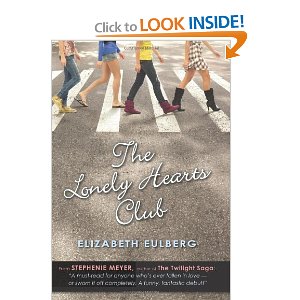
Why is this super fab new release? Let me count the ways…
1. The BEATLE-rific references.
Hello, you know me, right? How could I not fall for lines like this:
There was only one thing I could do to ease the pain. I turned to the only four guys who’d never let me down. The only four guys who’d never broken my heart .
John, Paul, George, and Ringo.
Yep, you had me right there, Ms. Eulberg.
2. Contemporary Realism? Who, me?
Let’s face it. I usually prefer to throw realism out the window when it comes to YA novels. Give me a dash of magic and a smokin’ hot supernatural love interest any day of the week.
But Eulberg’s book sucked me into a 100% vampire/angel/werewolf/fae/zombie/prophecy free world. And I loved it. The characters could have easily been teens I know facing real life obstacles.
3. Sweet premise, savory resolution.
When Penny Lane gets her heart broken one too many times, she decides to swear off guys for good. She and her friends start The Lonely Hearts Club to affirm the bonds of friendship and the vow of self-preservation. These gals grow into a force to be reckoned with–they come to redefine themselves sans boyfriends.
But…when a non-jerk works his way into Penny’s heart, is the club doomed?
The author resolves the plot without tying things up with a giant valentine bow. The ending is satisfying without becoming too sweet or too simple. It’s just right. And thanks to a pitch perfect protagonist voice, I found myself thinking about Penny long after I’d turned the last page.
I’m so excited about this book, I’m giving a copy away. In the comments area for this post, use at least one Beatles’ reference to convince me why I should send YOU a copy of THE LONELY HEARTS CLUB. I’ll pick a winner next week.
Hungry for more?
Try this recipe for Strawberry Fields Forever Shortcake
Binge!
Filed under:
Book Reviews,
Uncategorized Tagged:
Book Review,
Contest,
Elizabeth Eulberg,
Strawbery Field Forever Shortcake,
The Beatles,
The Lonely Hearts Club,
YA  10 Comments on Win a Copy of The Lonely Hearts Club by Elizabeth Eulberg, last added: 6/12/2010
10 Comments on Win a Copy of The Lonely Hearts Club by Elizabeth Eulberg, last added: 6/12/2010





 Classic is the New Black:
Classic is the New Black:













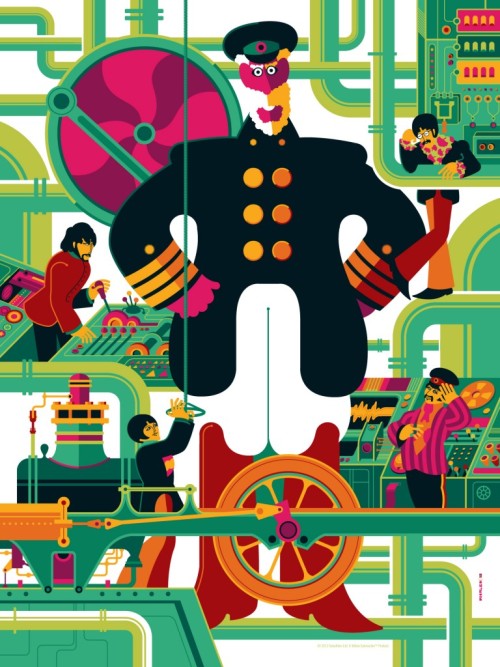
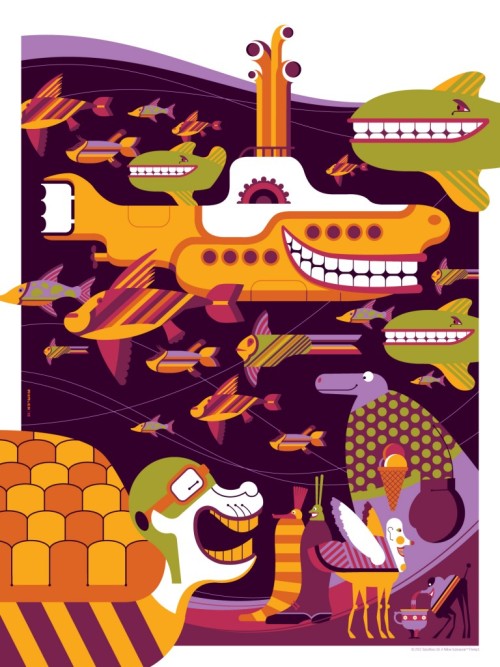
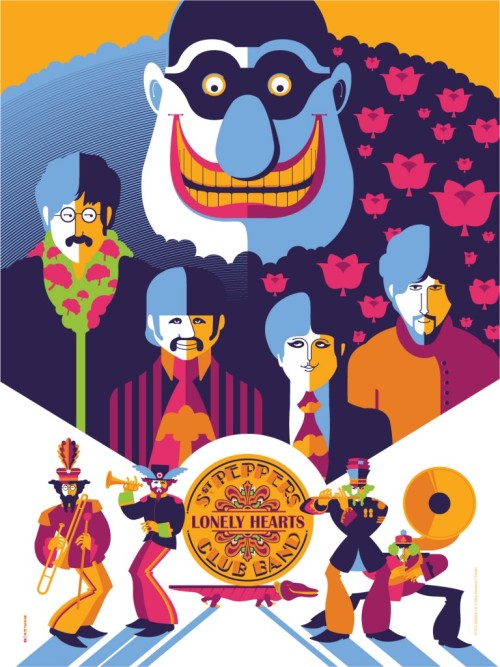

 Last Friday, Rolling Stones guitarist
Last Friday, Rolling Stones guitarist 




 0 Comments on Let me take you down, 'cause I'm going to Strawberry Fields... as of 1/1/1900
0 Comments on Let me take you down, 'cause I'm going to Strawberry Fields... as of 1/1/1900




i love this drawing, as i do anything you create ;)
i appreciate how you showed the progression of the artwork on LOVE. very cool.
i like the simplicity of the picture, a departure from the other pieces you've done. yet there's enough of your traditional artwork contained within, which is a nice offset to the simpler sketches.
you can do no wrong in my book. everything is fascinating in its own unique way ;)
Talk to me about ballpoint pen preferences. PLEASE. I like your art and your choice of instruments, and I'd like to partake.
Haha, but who said art was supposed to be easy? Fight the urge! Vive la resistance etc etc
Such good advice during a week when I really need it.
THANK YOU for this.
Do I detect a growth spurt? :-)
I had to squint (love that word) really hard to read those words of wisdom, glad I did, I'm just starting my sketch of Kylie Minogue...
I had to laugh--I don't think I've ever resisted an urge to hatch in my life, on doodles or otherwise--even when I'm painting. Ball point pens can be wonderfully sensitive instruments. I really like this.
this is great Andrea. Loved catchin up, it's be a while since i've been online.
Hi, I found your blog via a link and an article about your sketches, and I've got to say that I find your sketches/doodles/drawings extremely inspiring. As an artist, I'm constantly looking for fresh ideas and inspiration to keep me going, and your drawings are...well, for lack of a better word, inspiring. I look forward to seeing the new things you post!
You're art is always fascinating to me, these pages are delightful. I love the departure just as much as I love all your work.
Hugs
Thank you all, folks.
Is it just me or it it bloody difficult NOT to cross hatch everything in sight?
Mo, that's a lovely thing to say - and hear! Thank you.
MrCachet, this is the mosy asked question. I really must put a FAQ page on this blog somewhere. Really, NO preferences. As long as the ballpoint is not blotchy I'll use it. I'm not fussy, or loyal to any particular brand. Any will do.
THANK YOU all. You make my day.